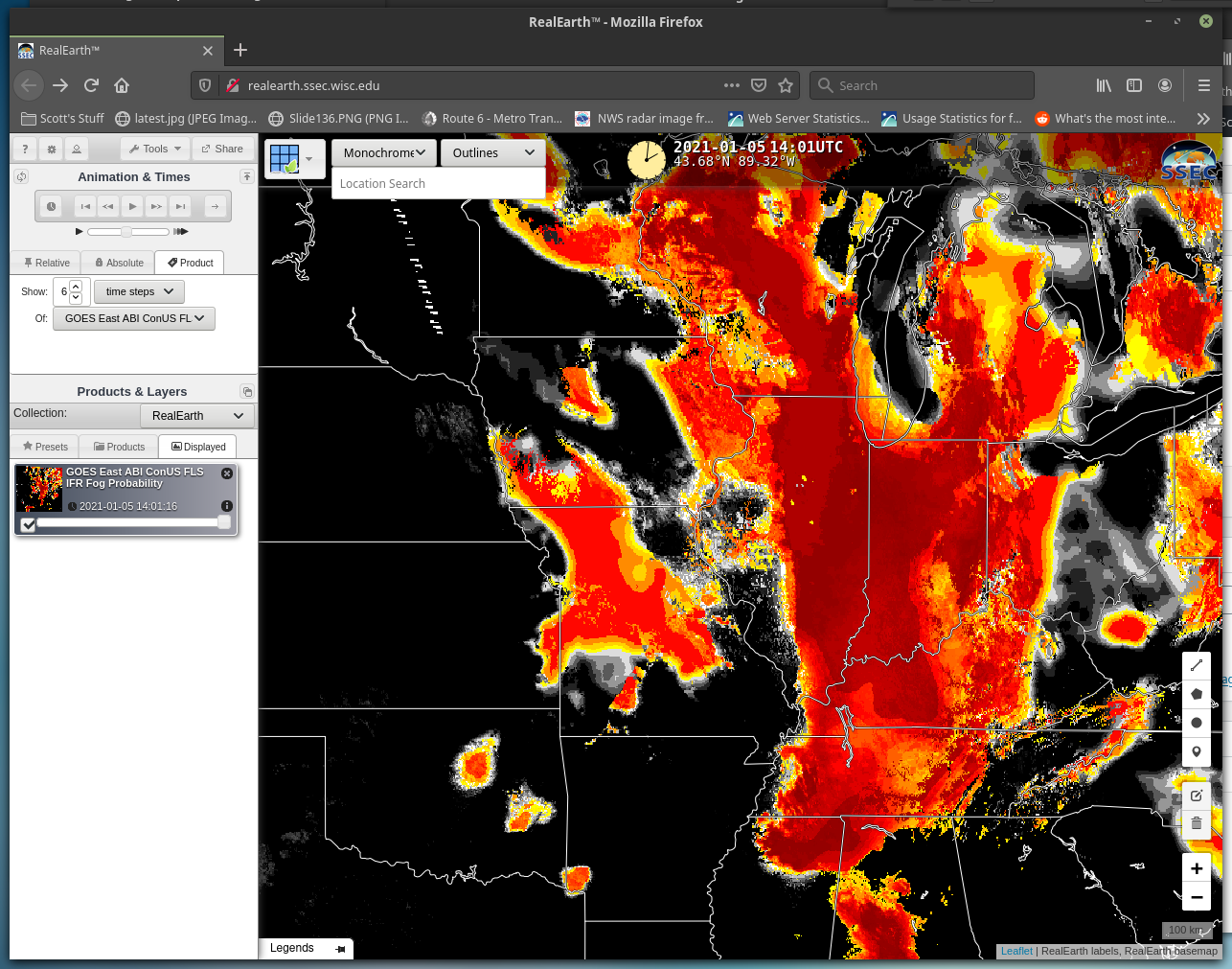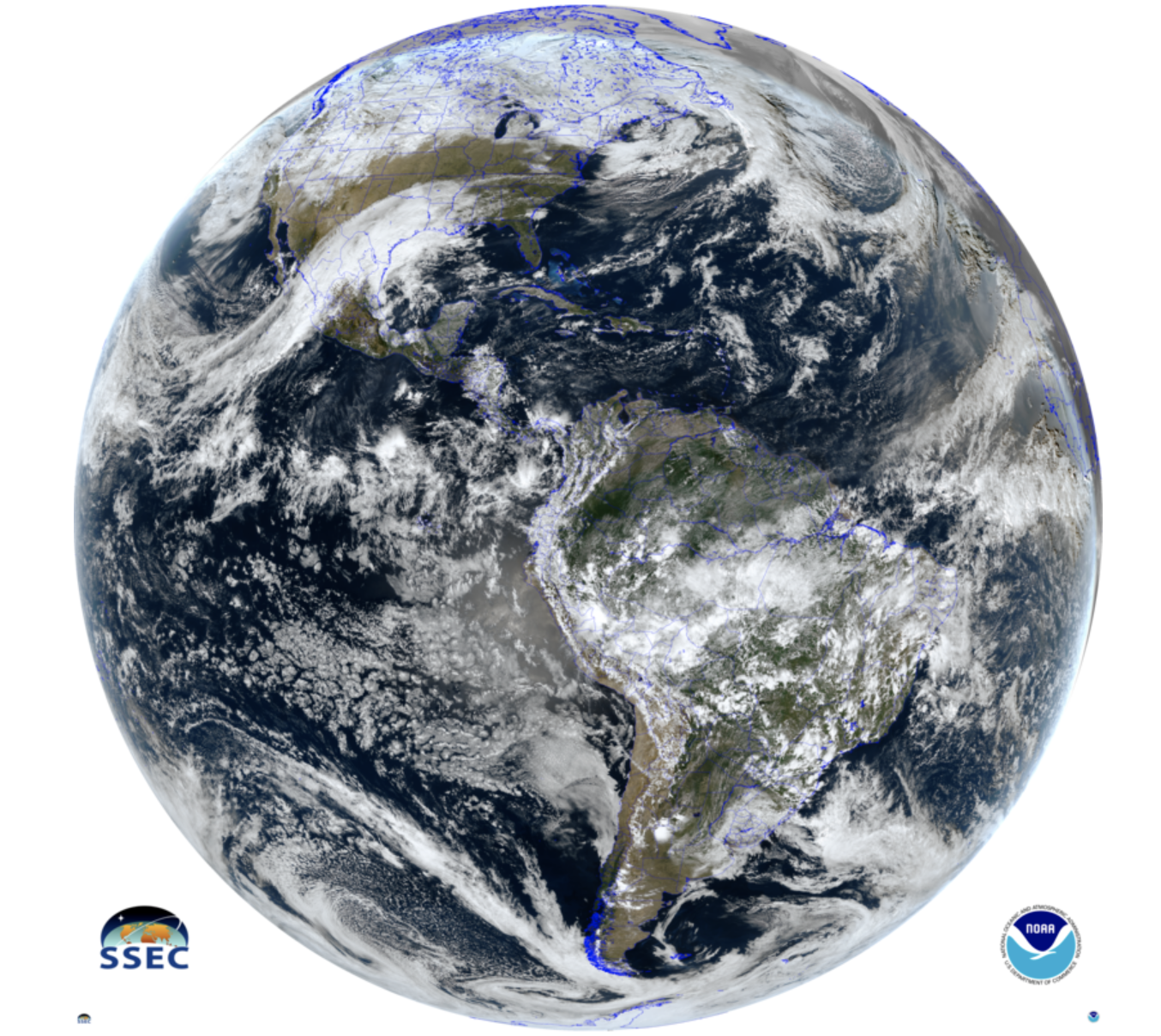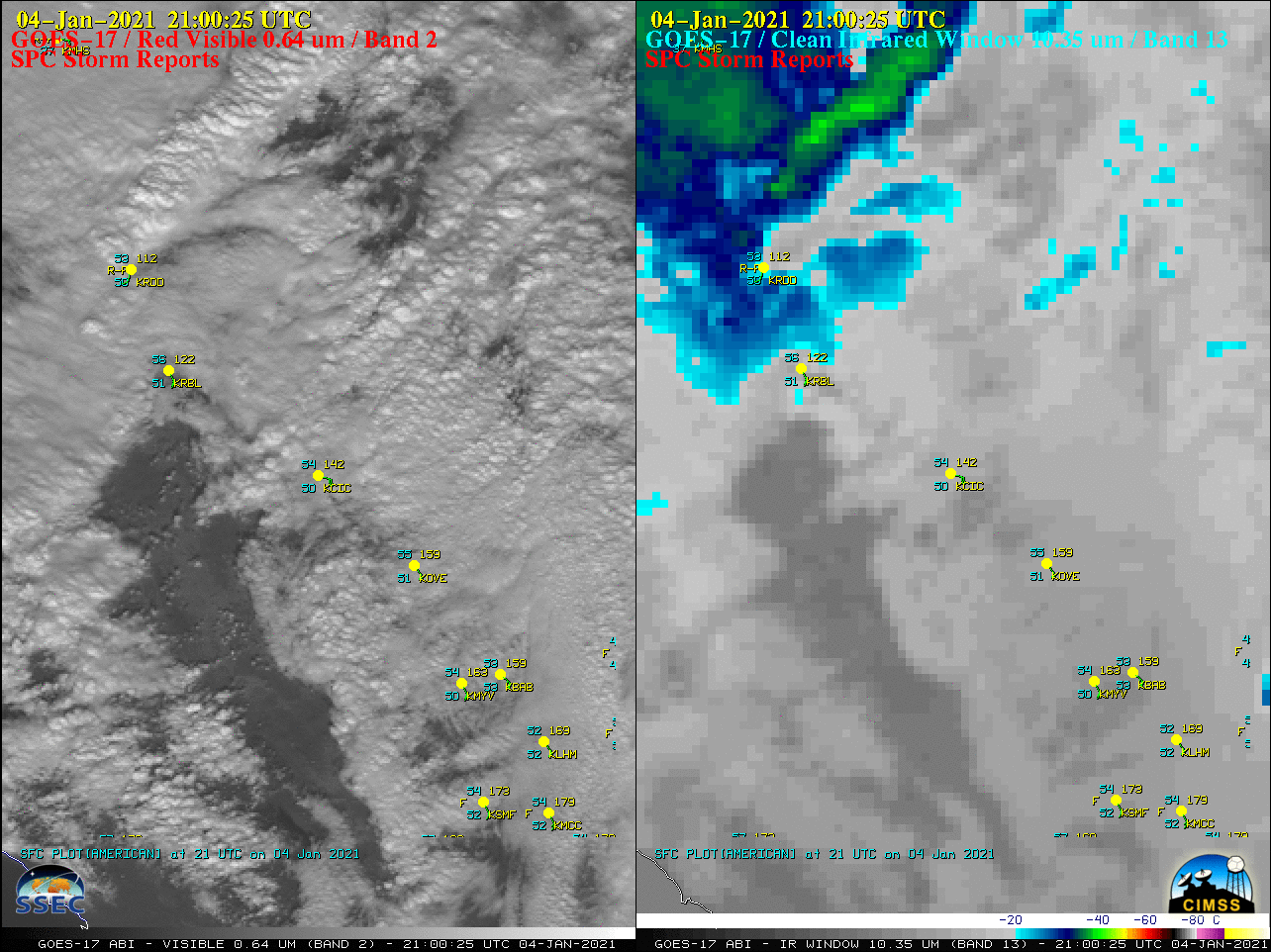
[ Archive ]

 |
CIMSS-NOAA Weekly Report [ Archive ] |
 |
CIMSS AND ASPB WEEKLY HIGHLIGHTS FOR THE WEEK ENDING JANUARY 8, 2021
PRODUCTS AND APPLICATIONS:
GOES-16 Fog/Low Stratus Products available in RealEarth: GOES-16 IFR Probability products have been incorporated into RealEarth (https://realearth.ssec.wisc.edu) and can be accessed via the Search Box. These products combine satellite observations of clouds and model estimates of low-level saturation to provide skillful information on the probability that aviation-based visibility rules (probability of Instrument Flight Rules (IFR) conditions; probability of Low IFR conditions; probability of Marginal Visual Flight Rules (MVFR) conditions) are occurring. In addition, a satellite-based low cloud thickness estimate is available. Training on these products is available at https://fusedfog.ssec.wisc.edu/training. See also this CIMSS Satellite blog post: https://cimss.ssec.wisc.edu/satellite-blog/archives/39540. (R. Dengel, S. Batzli, D. Parker, C. Calvert, S. Lindstrom, CIMSS; M. Pavolonis NOAA/STAR)
 (Click image to enlarge)
(Click image to enlarge)
Figure: GOES-16 IFR Probability fields in RealEarth, 1401 UTC on 5 January 2020
AWARDS AND RECOGNITION:
PUBLICATIONS:
WORKSHOPS, CONFERENCES, AND MEETINGS:
TRAINING AND EDUCATION:
VISIT Training on Satellite Detection of Blowing Snow: Scott Lindstrom from the Cooperative Institute for Meteorological Satellite Studies (CIMSS) gave a live Virtual Institute for Satellite Integration Training (VISIT) presentation on GOES-R Detection of Blowing Snow to forecasters at the St Louis forecast office (WFO LSX). This new-for-2020-cold-season module is also available on YouTube: https://www.youtube.com/watch?v=LVEKXHKS5_g. (S. Lindstrom, CIMSS, 608 263 4425)
MEDIA AND OUTREACH:
SSEC and CIMSS Scientists in the News: Scientists at the University of Wisconsin-Madison (UW) Space Science and Engineering Center (SSEC) and the Cooperative Institute for Meteorological Satellite Studies (CIMSS) provide expert interviews, imagery and case studies to promote science. 1) SSEC News published, 2020 in review: A year of science, highlighting research and education contributions over the last 12 months. Read more: https://www.ssec.wisc.edu/news/articles/13398/. 2) CIMSS Satellite Blog contributors Scott Lindstrom, Scott Bachmeier, and Tim Schmit published case studies on "Severe Weather in southeast Texas" (Jan. 6), "Cold air advection in the Bering Sea" (Jan. 5), "Tornadoes in northern California" (Jan. 4), "There GOES 2020" (Jan. 4), "Snow cover in Texas" (Jan. 1-4), "NOAA-20 VIIRS views of the Great Lakes in December 2020" (Jan. 1), and "Hurricane Force low moves into the Bering Sea" (Dec. 31). Read more: https://cimss.ssec.wisc.edu/satellite-blog/. (J. Phillips, SSEC, 608-262-8164, E. Verbeten, SSEC, S. Lindstrom, CIMSS, S. Bachmeier, CIMSS, T. Schmit, E/RA2, 608-263-0291)
 (Click image to enlarge)
(Click image to enlarge)
Figure: An animation of daily NOAA GOES-16 or GOES-17 ABI images for the year 2020. Visit the CIMSS Satellite Blog post of Jan. 4, 2021 to launch the animation: https://cimss.ssec.wisc.edu/satellite-blog/archives/39421.
 (Click image to enlarge)
(Click image to enlarge)
Figure: One-minute GOES-16 visible and infrared images showed thunderstorms moving eastward across Northern California on Jan. 4, 2021, producing two tornadoes. Source: https://cimss.ssec.wisc.edu/satellite-blog/archives/39597. Credit: CIMSS.
OTHER:
| Archived Weeklies Page | Submit a report item |